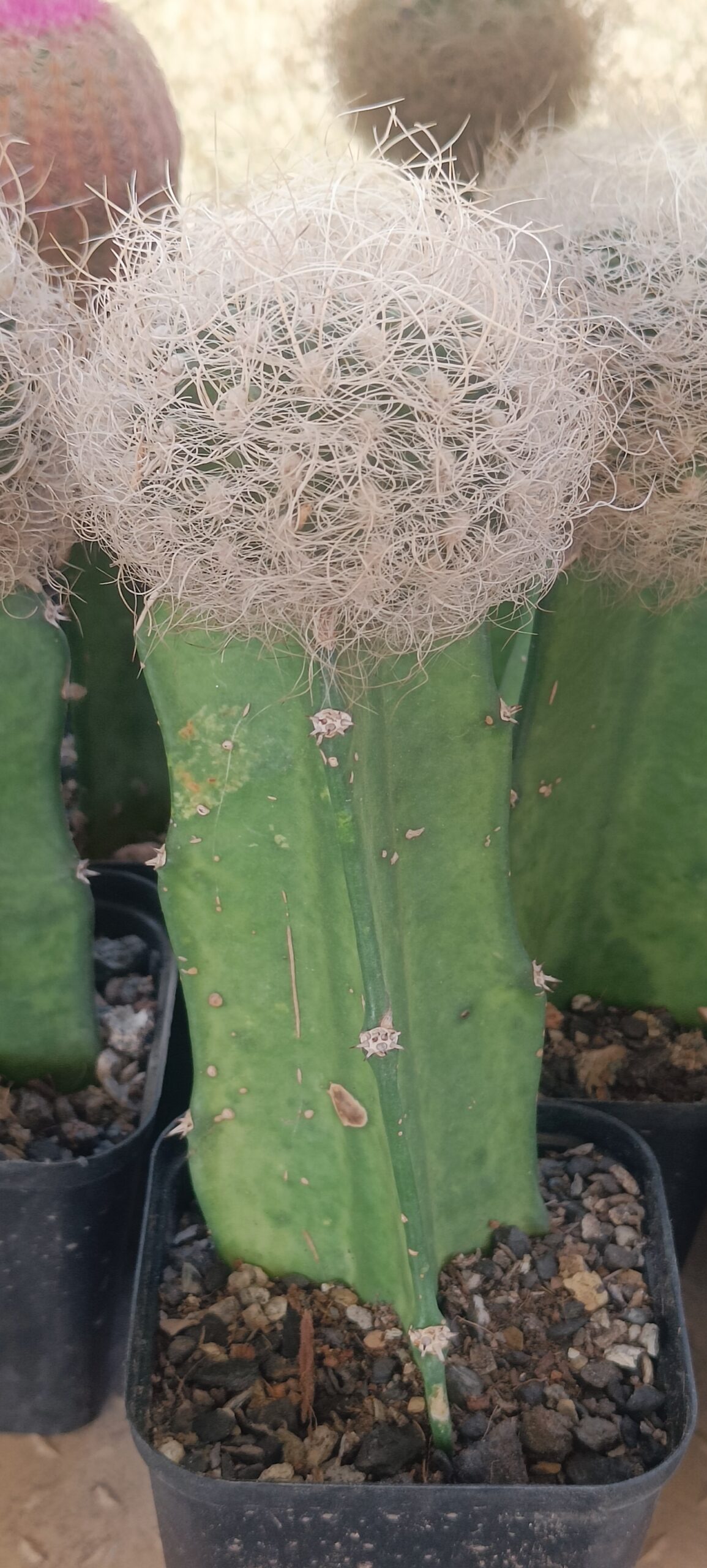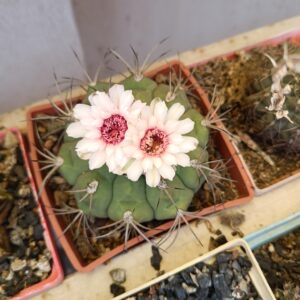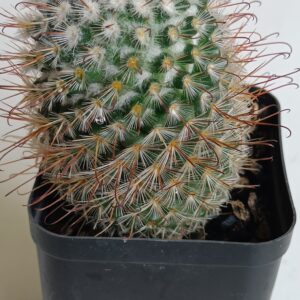Neoporteria senilis, also known as Eriosyce senilis, is a striking cactus with dense white or silver spines and often dark, dramatic flowers. When grafted, its care changes slightly due to the needs of the rootstock and the increased sensitivity of the graft union. Here’s a complete guide:
🌵 Grafted Neoporteria senilis Care
🔆 Light
-
Prefers bright indirect light or filtered sun—too much direct sun can stress or burn the scion, especially at the graft.
-
Indoors: place near a bright window with some direct morning sun.
-
Outdoors: bright shade or morning sun, protect from intense midday rays.
🌡️ Temperature
-
Ideal: 65–85°F (18–29°C).
-
Protect from temperatures below 45°F (7°C)—especially the rootstock.
-
Avoid high humidity or prolonged damp conditions.
💧 Watering
-
Water deeply but infrequently, only when the soil is bone dry.
-
In the growing season (spring/summer): water every 2–3 weeks, less in cooler temps.
-
In winter: almost no watering unless the rootstock starts to shrivel.
-
Always water around the base, never over the graft union.
🌱 Soil
-
Use a well-draining cactus mix with added pumice or perlite.
-
Avoid water-retentive components like peat moss.
🍽️ Fertilizer
-
Feed every 4–6 weeks during spring and summer with a low-nitrogen cactus fertilizer, diluted to half strength.
-
Don’t fertilize in winter.
🪴 Pot
-
Must have drainage holes.
-
Avoid overpotting—choose a pot just slightly larger than the root system.
🛠️ Grafting-Specific Tips
-
The health of the rootstock (often Myrtillocactus, Hylocereus, or Trichocereus) is essential—its needs may differ slightly:
-
Hylocereus rootstock is tropical and more water-sensitive in winter.
-
Myrtillocactus prefers warm temps and good airflow.
-
-
Check the graft union regularly for signs of rot, shriveling, or separation.
-
If the rootstock fails, re-grafting may be necessary to save the scion.
🐛 Pests
-
Watch for:
-
Mealybugs at the graft site
-
Spider mites on the dense spines
-
Fungal issues around the graft due to poor airflow
-




Reviews
There are no reviews yet.